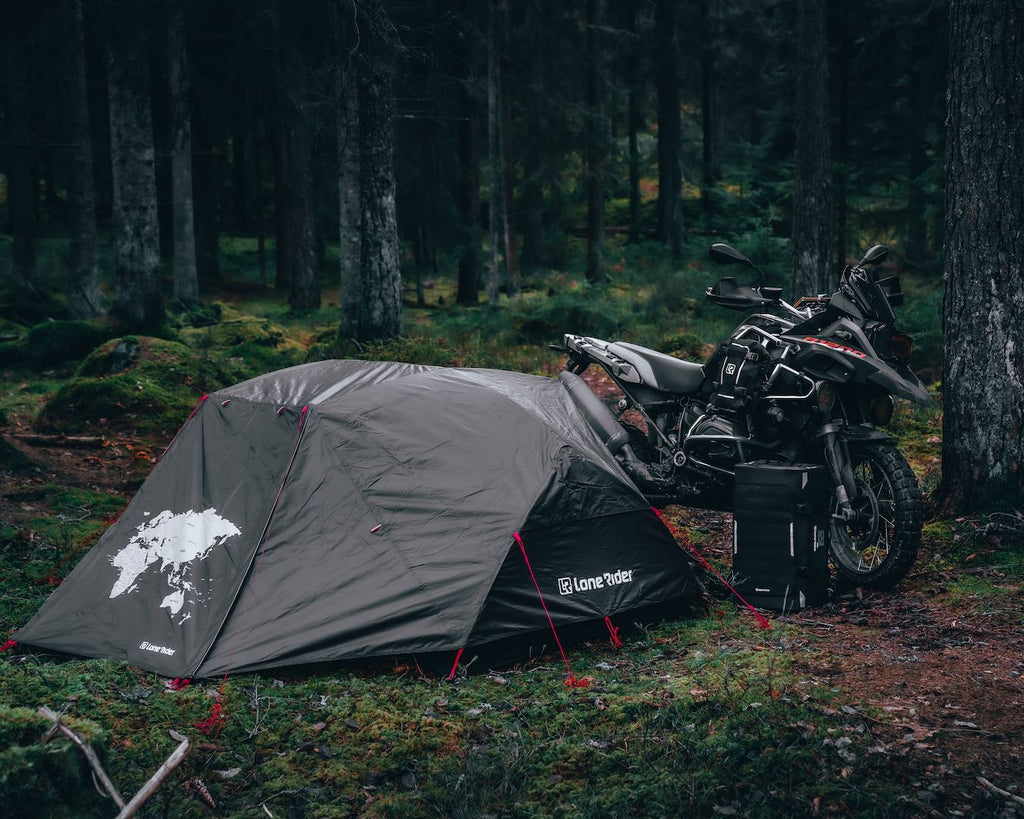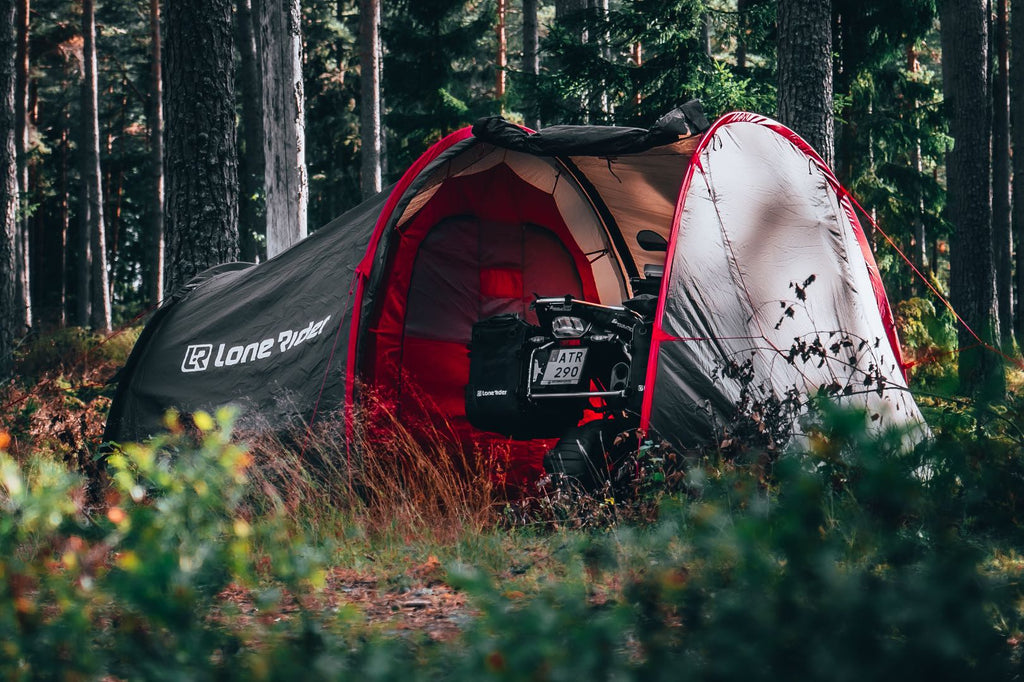Battle Condensation: How To Keep Moisture Out of Your Tent

Soggy tent syndrome. We’ve all been there. After a long day out and about, you come back to a tent dripping with water on the inside.
This, friends, is called condensation. There’s really no way around it, but if we better understand it then we can do our best to keep moisture out of our tent.
Here we’ll talk briefly about what tent condensation is, followed by what you can do to keep it at bay while using the ADV Tent.
What is tent condensation?
To understand condensation let’s take an extreme case: your shower. After a hot shower, you’ll find the mirror has fogged up and gotten wet due to the steam.
This is how condensation forms. Basically, when warmer air (especially warm, humid air) makes contact with a colder surface, the cooler surface turns the water vapor into tiny water droplets, creating condensation.
In the case of your tent, condensation can form in a number of ways, but we should note that you’re not going to prevent condensation. It’s a natural occurrence dependent on the amount of humidity in the air. All we’re trying to do is minimize its effects.
 Featured products: Adventure Motorcycle Tent - ADVTent, Motorcycle Bag - Overlander, Motorcycle Bag - MiniBag 6L
Featured products: Adventure Motorcycle Tent - ADVTent, Motorcycle Bag - Overlander, Motorcycle Bag - MiniBag 6L
What can we do to keep tent condensation to a minimum
Now that we have a basic understanding of how tent condensation forms, let’s take a look at some things you can do to keep tent condensation to a minimum before you get going on your next ADV trip.
Location
- First off, pick the right place to pitch your tent. An ideal location would be under a tree, since air under trees is usually warmer, meaning there will be less chance of water vapor cooling into droplets when it makes contact with your tent.
- Avoid camping near a water source such as lakes, streams, ponds, or anywhere where the humidity is high. At this point, you’re probably catching on as to why you don’t want to set up camp near these areas.
- One last thing about location: try to avoid low points in the landscape to pitch your tent. As a refresher to grade school science class, warm air tends to rise, while cool, denser air tends to fall. If you’re set up at a low point, at night this cooler air will fall right on your tent. If your tent walls and rain fly are warmer, well, guess what happens.
Good practice
- With a location picked out and the tent pitched, what now? The name of the game here is minimizing moisture inside the tent and keeping maximum airflow.
- The minimizing moisture part is easy: don’t keep anything wet or damp inside your tent. If you have wet clothes, hang them up outside to dry or store them away in a bag.
- If you need to boil water, do it outside your tent. Same goes for cooking–don’t do it inside the tent. The reason should be obvious by now, but if not, it’s to keep humidity inside the tent as low as possible.
- Otherwise, the simple act of breathing is going to add moisture to the air inside the tent (you release about 1 liter of moisture just when you sleep at night). Since we don’t suggest you stop breathing, this is the time we want to maximize the tent’s ventilation.
- If and when possible, leave the tent door open and open the rain fly and any other roll-up sections and vents to let air flow in and out. Obviously, if it starts to rain then you’ll want to close the tent, at which point tent condensation is going to be something you’re just going to have to deal with.
- Create air space between the tent and rain fly by making sure your tent is nice and taught in the ground and the rain fly has tension.
 Featured products: Motorcycle Camping Tent - MotoTent, Motorcycle Bags - MotoBags
Featured products: Motorcycle Camping Tent - MotoTent, Motorcycle Bags - MotoBags
What tent should I get in the first place?
There is no one answer to the “What tent?” question. Different needs, different climates, and different use cases are going to determine what could work best for you.
However, picking an appropriate campsite location is key no matter which kind of tent you use.
That said, here are some key components (both good and bad) of a single wall tent and a double-wall tent.
- Single wall tent: Known for their lightweight and simplicity, single-wall tents are essentially a rain fly with a floor. As the name would suggest, there’s just a single wall–like a tarp–between you and the outside world. Because of their thin, lightweight nature, it’s generally easy to get plenty of airflow through it. The sacrifice, of course, is keeping cool air out if you’re camping in colder weather. A single-wall tent is a good idea if summer camping is your thing and minimizing tent condensation is important.
- Double-wall tent: Just as the name gave away what a single wall tent is, a double-wall tent is just as obvious. The first wall is typically a mesh layer of some kind, with a more impervious material for the rain fly atop it. Typically, condensation will travel through the mesh and hang on the rain fly. This is a bonus if you forget or are too tired to keep wet clothes outside. While you can still definitely use a double-wall tent in the summer (one of the benefits of a double wall is its suitable temperature range), they tend to have less airflow. Double-wall tents work well in cooler temps because they do a better job of trapping body heat.
Concluding thoughts
There’s a lot to consider when making a tent purchase. Tent condensation isn’t typically one of them–until it’s too late.
If soggy tent syndrome is something you’re trying to avoid in the future, hopefully, these tips help you make an informed tent-buying decision.